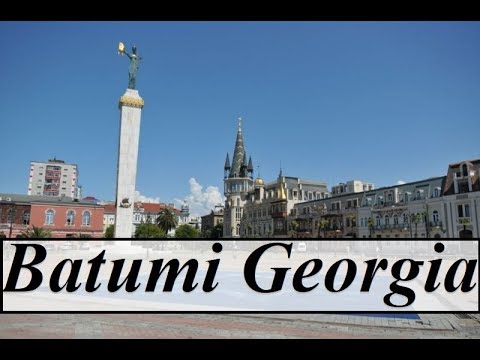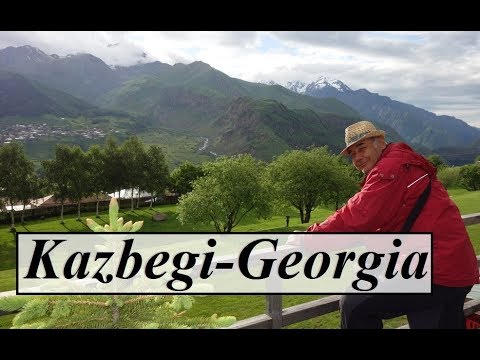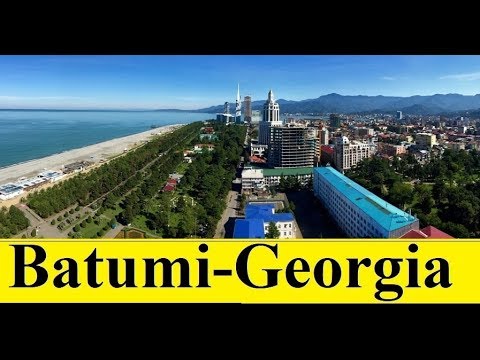Georgia/Tbilisi (Caucasian Beauty) Part 11
Welcome to my travelchannel.On my channel you can find almost 1000 films of more than 70 countries. See the playlist on my youtube channel.Enjoy! / nurettinodunya Tbilisi/Georgia: Tbilisi Georgian: თბილისი)is the capital and the largest city of Georgia, lying on the banks of the Kura River with a population of approximately 1.5 million people. Founded in the 5th century AD by Vakhtang I Gorgasali, the monarch of the Kingdom of Iberia, Tbilisi since served as the capital of various Georgian kingdoms and republics. Between 1801 and 1917, then being under the rule of the former Russian Empire, Tbilisi was the seat of the Imperial Viceroy, governing both Southern and Northern Caucasus. Because of its location on the crossroads between Europe and Asia, and its proximity to lucrative east-west trade routes, throughout history Tbilisi was a point of contention between various global powers. The city's location to this day ensures its position as an important transit route for various energy and trade projects. Tbilisi's diverse history is reflected in its architecture, which is a mix of medieval, classical, Middle Eastern, Art Nouveau, Stalinist and Modernist structures. Historically Tbilisi has been home to people of multiple cultural, ethnic, and religious backgrounds, though it is currently overwhelmingly Eastern Orthodox Christian. Its notable tourist destinations include cathedrals Sameba and Sioni, classical Freedom Square, Rustaveli Avenue and Agmashenebeli Avenue, medieval Narikala Fortress, pseudo-Moorish Opera Theater, and the Georgian National Museum. Location:Tbilisi is located in the South Caucasus at 41° 43' North Latitude and 44° 47' East Longitude. The city lies in Eastern Georgia on both banks of the Mt'k'vari River. The elevation of the city ranges from 380–770 metres above sea level (1,250–2,530 ft) and has the shape of an amphitheatre surrounded by mountains on three sides. To the north, Tbilisi is bounded by the Saguramo Range, to the east and south-east by the Iori Plain, to the south and west by various endings (sub-ranges) of the Trialeti Range. The relief of Tbilisi is complex. The part of the city which lies on the left bank of the Mt'k'vari River extends for more than 30 km (19 mi) from the Avchala District to River Lochini. The part of the city which lies on the right side of the Mt'k'vari River, on the other hand, is built along the foothills of the Trialeti Range, the slopes of which in many cases descend all the way to the edges of the river Mt'k'vari. The mountains, therefore, are a significant barrier to urban development on the right bank of the Mt'k'vari River. This type of a geographic environment creates pockets of very densely developed areas while other parts of the city are left undeveloped due to the complex topographic relief.To the north of the city, there is a large reservoir (commonly known as the Tbilisi Sea) fed by irrigation canals. As a multicultural city, Tbilisi is home to more than 100 ethnic groups. Around 89% of the population consists of ethnic Georgians, with significant populations of other ethnic groups such as Armenians, Russians, and Azeris. Along with the above-mentioned groups, Tbilisi is home to other ethnic groups including Ossetians, Abkhazians, Ukrainians, Greeks, Germans, Jews, Estonians, Kurds, Assyrians \u0026 Yazidis, and others.More than 95% of the residents of Tbilisi practise forms of Christianity (the most predominant of which is the Georgian Orthodox Church). The Russian Orthodox Church, which is in Full communion with the Georgian, and the Armenian Apostolic Church have significant followings within the city as well. A minority of the population (around 1.5%) practises Islam (mainly Shia Islam), while about 0.1% of Tbilisi's population practises Judaism. There is also Roman Catholic church and the Yazidi Sultan Ezid Temple. Tbilisi has been historically known for religious tolerance. This is especially evident in the city's Old Town, where a mosque, synagogue, and Eastern and Oriental Orthodox churches can be found less than 500 metres (1,600 ft) from each other.Wikipedia
Nurettin Yilmaz-ის სხვა ვიდეოები
 05:04
05:04
Welcome to beautiful Caucasian Georgia (საქართველო...
 04:03
04:03
Georgia/Batumi (Europe Square-Batumi Boulevard) Pa...
 03:23
03:23
Georgia/Batumi (View from Sheraton Hotel) Part 38
 04:18
04:18
Georgia/Batumi Boulevard (Dance \u0026 Music) Part...
 05:12
05:12
Georgia/Batumi-Boulevard (Dance \u0026 Music) Part...
 03:21
03:21
Georgia/Kazbegi (View from the Rooms Hotel) Part 2...
 04:08
04:08
Georgia/Batumi (Sea port/Ali \u0026 Nino) Part 40
 06:12
06:12
Georgia/Batumi (Boulevard-Seafront Promenade) Par...
მსგავსი ვიდეოები

Georgia/Tbilisi (Georgian Music) Part 22
Nurettin Yilmaz

Georgia/Batumi-Boulevard (Dance \u0026 Music) Part 41
Nurettin Yilmaz

მცხეთა / Mtskheta
Lasha Mtvaradze

Georgia/Batumi Boulevard (Dance \u0026 Music) Part 43
Nurettin Yilmaz

Georgia/Batumi-Boulevard (Dance \u0026 Music) Part 42
Nurettin Yilmaz

Tbilisi City Walk (Many Sides of Georgian Capital) თბილისი
Lex Universe

Georgia/Batumi to Tbilisi Part 46
Nurettin Yilmaz

Welcome to beautiful Caucasian Georgia (საქართველო) Part 1
Nurettin Yilmaz